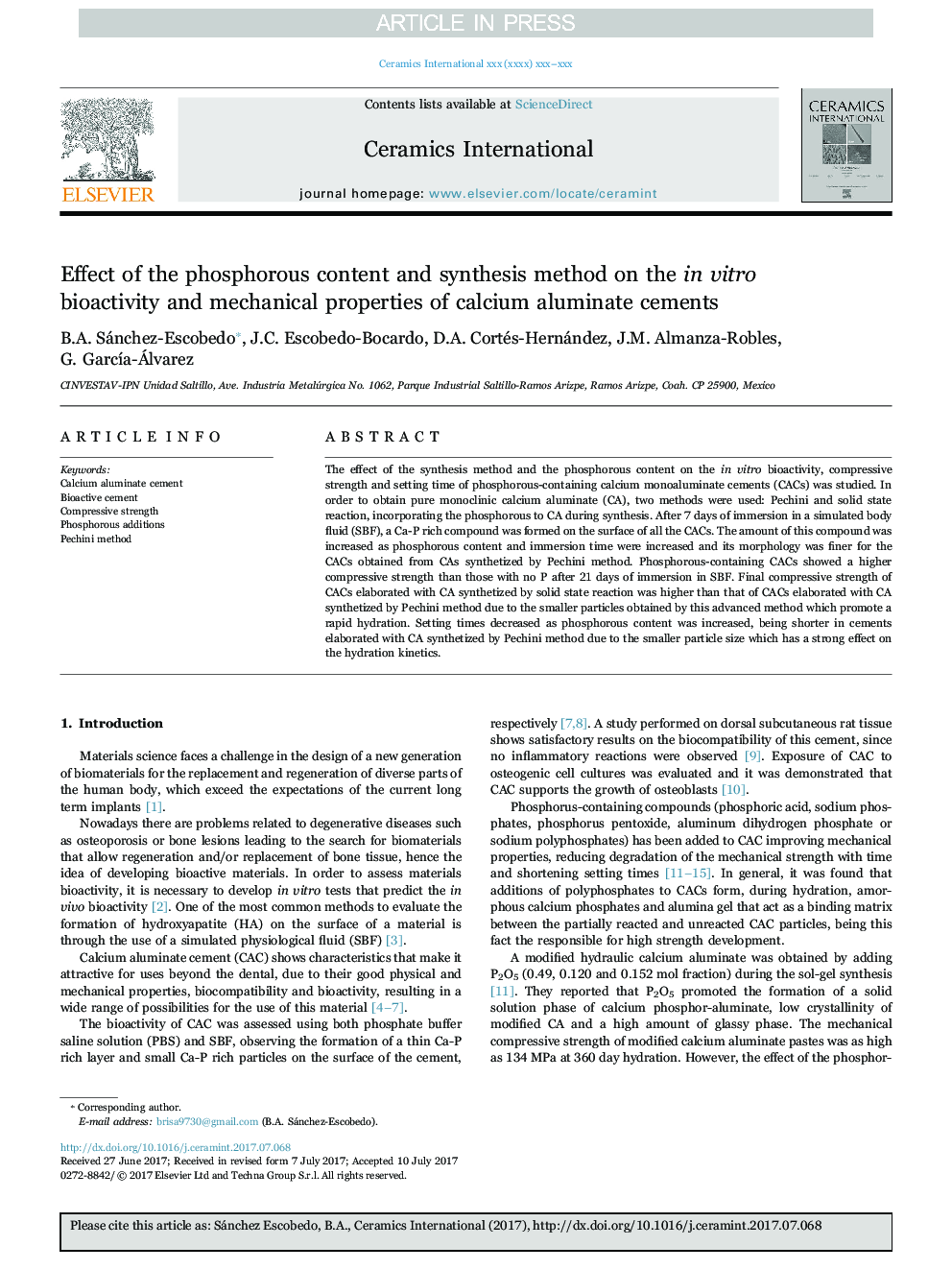| Article ID | Journal | Published Year | Pages | File Type |
|---|---|---|---|---|
| 5437863 | Ceramics International | 2017 | 10 Pages |
Abstract
The effect of the synthesis method and the phosphorous content on the in vitro bioactivity, compressive strength and setting time of phosphorous-containing calcium monoaluminate cements (CACs) was studied. In order to obtain pure monoclinic calcium aluminate (CA), two methods were used: Pechini and solid state reaction, incorporating the phosphorous to CA during synthesis. After 7 days of immersion in a simulated body fluid (SBF), a Ca-P rich compound was formed on the surface of all the CACs. The amount of this compound was increased as phosphorous content and immersion time were increased and its morphology was finer for the CACs obtained from CAs synthetized by Pechini method. Phosphorous-containing CACs showed a higher compressive strength than those with no P after 21 days of immersion in SBF. Final compressive strength of CACs elaborated with CA synthetized by solid state reaction was higher than that of CACs elaborated with CA synthetized by Pechini method due to the smaller particles obtained by this advanced method which promote a rapid hydration. Setting times decreased as phosphorous content was increased, being shorter in cements elaborated with CA synthetized by Pechini method due to the smaller particle size which has a strong effect on the hydration kinetics.
Related Topics
Physical Sciences and Engineering
Materials Science
Ceramics and Composites
Authors
B.A. Sánchez-Escobedo, J.C. Escobedo-Bocardo, D.A. Cortés-Hernández, J.M. Almanza-Robles, G. GarcÃa-Álvarez,
